How To Start Pricing Experiments in 2025
Pricing experiments are more than just adjusting numbers; they are a powerful tool to unlock your business’s potential. However, identifying the ideal pricing strategy for your customers can be challenging. Through effective pricing experiments, you can significantly boost your bottom line by optimizing revenue, conversion, and customer engagement.
Why Pricing Experiments Matter
Let’s be honest—if you’re not experimenting with pricing, you're missing out on opportunities. Strategic pricing could have a more substantial impact on profitability than any other growth strategy.
The Impact of Strategic Pricing
Studies show a mere 1% improvement in pricing can yield an 11.1% increase in operating profit. That’s a bigger influence than cost reductions or volume increases. Here’s why getting your pricing right is crucial:
- Lost Opportunities: Inappropriate pricing can lead to lower revenue and missed market opportunities.
- Perceived Value: Incorrect pricing can diminish the perceived value and lead to reduced market share.
- Customer Confusion: Consistency in pricing reduces confusion and builds trust.
The Psychology Behind Pricing Decisions
Understanding the psychology behind pricing is key to crafting successful experiments. Customers don’t just buy products; they engage with a product that solves specific jobs for them.
The Jobs To Be Done (JTBD) Framework
When customers buy your product, they're not just buying features - they're "hiring" your product to do a job. Here's how to apply JTBD to pricing:
- Functional Jobs
- What practical problem does your product solve?
- How much time/money does it save?
- What efficiency gains does it provide?
- Emotional Jobs
- How does your product make customers feel?
- What status does it convey?
- What peace of mind does it provide?
- Social Jobs
- How does your product help customers fit in or stand out?
- What image does it project to others?
- How does it facilitate connections?
Price Anchoring in Practice
Rather than telling you about price anchoring, let me share a real experiment we ran at Mida.so:
We tested three pricing page variations:
- Control: Simple pricing table
- Variation A: Added "market price" comparison
- Variation B: Added "you save" calculation
Results:
- Variation A: +15% conversion rate
- Variation B: +23% conversion rate and +18% average order value
Getting Started with Pricing Experiments
1. Know Your Baseline
Before making any changes, you need solid baseline data. Here's what to track:
- Current conversion rate by pricing tier
- Average order value
- Customer lifetime value
- Churn rate (for subscription products)
- Revenue per visitor
Pro tip: Use tools like Mida.so to run A/A test to establish reliable baseline metrics before running any experiments.
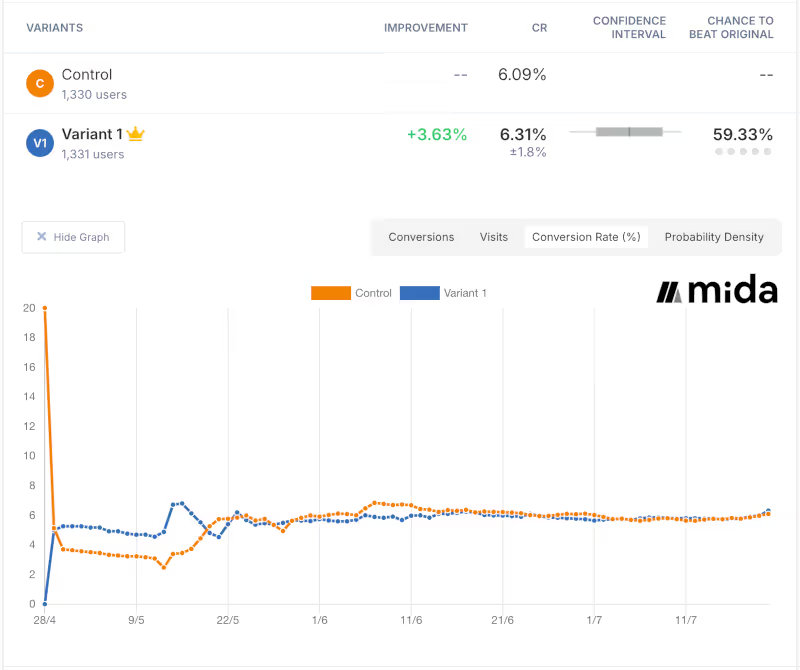
2. Identify Your Goals
What are you trying to achieve with your pricing experiments?
More revenue? Higher conversion rates? Better customer retention?
Be specific. "Make more money" isn't a goal. "Increase average order value by 15%" is.
3. Understand Your Customers
This is crucial. You need to know who your ideal customer is and what they care about.
Are they price-sensitive? Do they value quality over cost?
Use the JTBD framework to dig deep into what your customers really want.
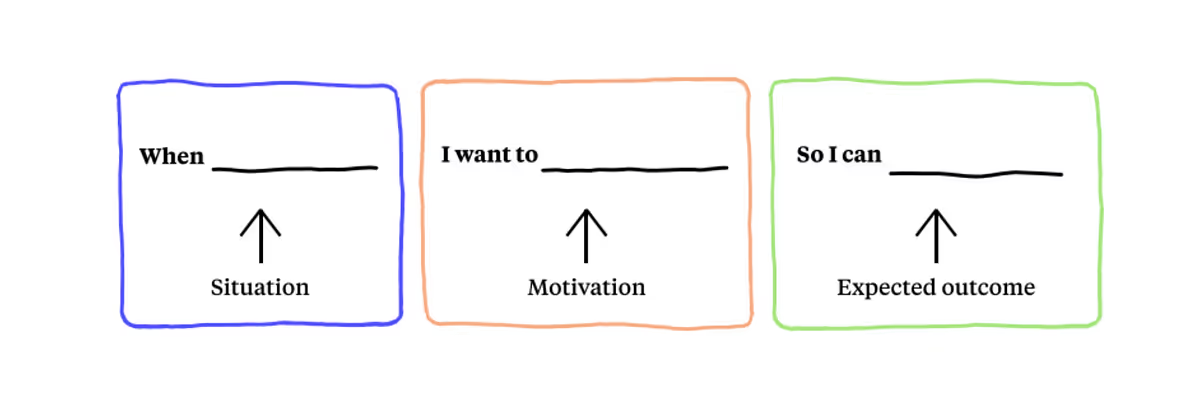
4. Choose Your Experiment Type
Based on your goals, select from these proven experiment types:
- A/B Test Pricing: Test two different price points and see which performs better.
- Comparative Pricing: Show your price next to a higher "competitor" price.
- Item Bundling: Offer products together at a slight discount.
- Charm Pricing: Use prices ending in .99 or .97.
- Exclusive Pricing: Offer special prices to certain customer segments.

5. Set Up Your Experiment
Now it's time to put your experiment into action, you can easily use a tool like Mida.so to set up your A/B test.
Make sure you're only changing one variable at a time. If you change multiple things, you won't know what's actually driving the results.
6. Run the Experiment
Let your experiment run until you have statistical significance. Don't pull the plug too early, or you might draw the wrong conclusions.
Use a free A/B Test Duration Calculator to figure out how long to run your test.

7. Analyze the Results
Once your experiment is done, dive into the data. Look at your key metrics. Did they improve? By how much?
Don't just look at the numbers – try to understand the why behind them.
8. Iterate and Improve
Based on what you learned, plan your next experiment. Maybe you found that a higher price point actually increased conversions.
Great! Now test an even higher price, or try bundling at that new price point.
Common Pricing Experiment Mistakes to Avoid
- Not segmenting your audience: Different customer groups might respond differently to pricing changes. Don't treat all your customers the same.
- Ignoring the competition: Your prices don't exist in a vacuum. Keep an eye on what your competitors are doing.
- Focusing only on price: Remember, value isn't just about price. Test different value propositions along with your pricing experiments.
- Neglecting your brand: Drastic price changes can affect how people perceive your brand. Be mindful of this.
- Forgetting about profitability: Higher revenue doesn't always mean higher profits. Make sure you're factoring in your costs.
Advanced Pricing Strategies
Once you've got the basics down, you can start getting fancy with your pricing experiments. Here are some advanced strategies to consider:
Dynamic Pricing
Dynamic pricing, also known as surge pricing or demand-based pricing, is a strategy where prices are adjusted in real-time based on various factors such as demand, supply, competitor pricing, time of day, or even weather conditions.
This sophisticated pricing model allows businesses to maximize revenue by charging higher prices when demand is high and lower prices when demand is low, effectively balancing supply and demand while capturing maximum value from each transaction.
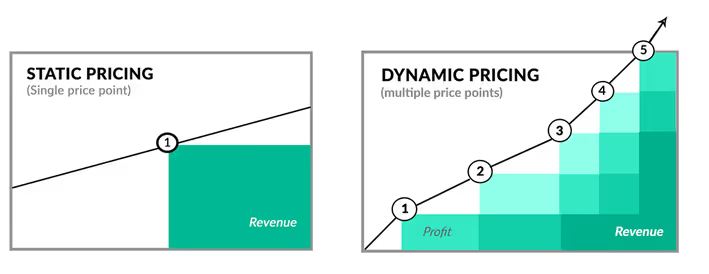
Companies like Uber and Airbnb have popularized this approach, using algorithms to automatically adjust prices during peak times or in high-demand areas, ensuring they can meet customer needs while optimizing their profits.
By implementing dynamic pricing, businesses can respond quickly to market changes, improve inventory management, and create a sense of urgency among customers, potentially driving more sales during slower periods and maximizing revenue during high-demand times.
Personalized Pricing
Use data about individual customers to offer personalized prices based on their purchase history, browsing behavior, or other factors.
This strategy leverages the power of data analytics and machine learning to dynamically adjust prices for each customer, potentially maximizing both conversion rates and revenue.
Personalized pricing can take many forms, from offering tailored discounts to loyal customers, to showing different base prices to different segments, or even adjusting prices in real-time based on a user's perceived willingness to pay.
While powerful, this approach requires careful implementation to avoid ethical concerns and maintain customer trust - transparency and perceived fairness are key to successful personalized pricing strategies.
Website personalization software can help you implement this advanced pricing technique, allowing you to create personalized experiences that include tailored pricing for different user segments.
Freemium Model
Offer a basic version of your product for free, then charge for premium features. This can be a great way to get users hooked on your product before asking them to pay.
The freemium model works by lowering the barrier to entry, allowing users to experience your product's core value without any financial commitment.
By strategically limiting certain features or capabilities in the free version, you create incentives for users to upgrade, turning casual users into paying customers once they've experienced the product's benefits firsthand.
This model is particularly effective for SaaS products, mobile apps, and online services where the marginal cost of serving additional free users is low, and the potential for viral growth through free users is high.
Value-Based Pricing
Instead of basing your price on costs or competitor prices, base it on the value your product provides to the customer. This requires a deep understanding of your customer's needs and pain points.
Value-based pricing focuses on the perceived worth of your product or service to the customer, rather than on your costs or market averages, allowing you to potentially charge premium prices if your offering truly solves significant problems or creates substantial benefits.
To implement this strategy effectively, you need to conduct thorough market research, engage in deep customer conversations, and possibly use techniques like the Van Westendorp Price Sensitivity Meter to gauge how much customers are willing to pay for different levels of value.
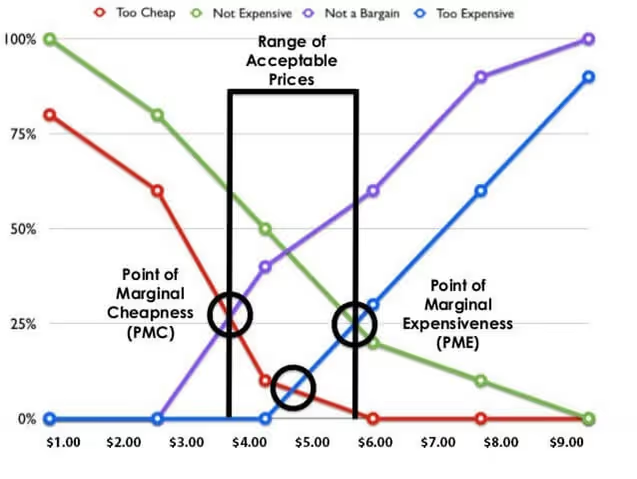
This approach often leads to higher profit margins and stronger customer relationships, as it aligns your pricing with the actual impact your product has on your customers' lives or businesses.
Case Studies: Pricing Experiments in Action
Netflix's Tiered Pricing

Netflix is a master of pricing experiments. They've constantly tweaked their pricing structure, moving from a single plan to multiple tiers. This allows them to capture different segments of the market, from budget-conscious viewers to those willing to pay more for premium features.
When Netflix first launched its streaming service, it offered a single plan at $7.99 per month. Over time, they introduced multiple tiers:
- Basic Plan: Lower price, standard definition, one screen at a time
- Standard Plan: Mid-range price, high definition, two screens at a time
- Premium Plan: Highest price, ultra-high definition, four screens at a time
This tiered approach allowed Netflix to:
- Attract price-sensitive customers with the Basic plan
- Upsell families and shared accounts to higher tiers
- Introduce price increases gradually by raising prices on specific tiers
The result? Netflix has been able to increase its average revenue per user (ARPU) while continuing to grow its subscriber base. In Q4 2022, Netflix reported an ARPU of $11.20 in the US and Canada, up from $8.28 in Q4 2017.
Apple's Premium Pricing

Apple employs a premium pricing strategy, setting its product prices significantly higher than competitors, which reinforces its brand image associated with quality and status. This strategy includes several key aspects:
- Price Anchoring: Apple maintains older models at lower price points when introducing new ones, making the new models appear more reasonable in comparison.
- Premium Positioning: By pricing its products higher, Apple reinforces its image as a luxury tech company.
- Price Maintenance: Apple rarely discounts its products, which helps maintain the perception of value over time.
- New Price Tiers: With each product launch, Apple tests the upper limits of what consumers are willing to pay, as exemplified by the iPhone X's introduction at $999.
Despite capturing a relatively small market share in the global smartphone market (around 15% in 2022), Apple commands approximately 80% of the global smartphone profits, demonstrating the effectiveness of its pricing strategy.
Upwork's Service Fee Changes
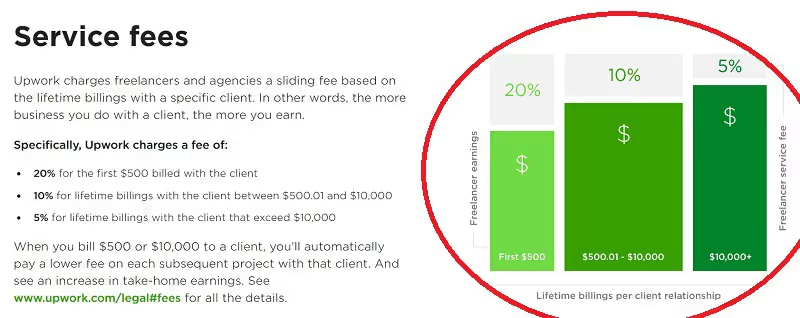
Upwork has modified its service fee structure, transitioning from a flat 10% fee to a sliding scale based on the freelancer's lifetime billings with a client. This change was designed to foster long-term relationships between freelancers and clients, benefiting all parties involved. The new fee structure was as follows:
- 20% for the first $500 billed with a client
- 10% for lifetime billings between $500.01 and $10,000
- 5% for lifetime billings exceeding $10,000
This adjustment had several notable effects:
- It incentivized freelancers to cultivate long-term relationships with clients.
- It encouraged higher-value projects, as the fee decreased with larger contracts.
- It allowed Upwork to capture more value from smaller, one-off projects.
Although the change faced some initial resistance from freelancers, Upwork reported increased client retention and a rise in higher-value projects in the quarters following the implementation of this new fee structure .However, it's important to note that as of May 3, 2023, Upwork has retired the sliding scale fee structure and reverted to a flat 10% service fee for all contracts, regardless of value .
Spotify's Geographic Pricing

Spotify has implemented various pricing strategies across different geographic regions, acknowledging that consumers' willingness to pay varies significantly due to factors such as average income, competition, and cultural attitudes towards music consumption. For instance:
- In the United States, Spotify Premium is priced at $9.99/month.
- In India, it costs ₹119/month (approximately $1.45).
- In the United Kingdom, the price is £9.99/month (approximately $12.50).
This geographic pricing strategy allows Spotify to maximize market penetration in price-sensitive areas, capture more value in markets with higher willingness to pay, and effectively compete with local streaming services.As a result of these strategies, Spotify has successfully grown its global subscriber base to over 200 million paid subscribers as of Q4 2022, with significant growth in emerging markets. This approach illustrates the effectiveness of thoughtful pricing experiments in enhancing a company's market presence and profitability.
FAQ
Q: How often should I run pricing experiments?
A: While there's no universal rule, aim for quarterly experiments. This provides enough time to gather significant data while staying agile. At Mida.so, we've found that seasonal businesses might benefit from more frequent testing during peak periods.
Q: What sample size do I need for reliable results?
A: Use our sample size calculator, but generally aim for at least 100 conversions per variation. For B2B with higher prices, you might need fewer but should run tests longer.
Q: How do I prevent customer confusion during tests?
A: Implement these best practices:
- Use geographic segmentation
- Maintain price consistency for existing customers
- Clear communication about any permanent changes
- Gradual rollout of significant changes
Conclusion
Pricing experiments are essential not just for finding the “right” price but for continuously optimizing value for your business and your customers. Start small, measure carefully, and let the data guide your strategy for long-term success.








.svg)
